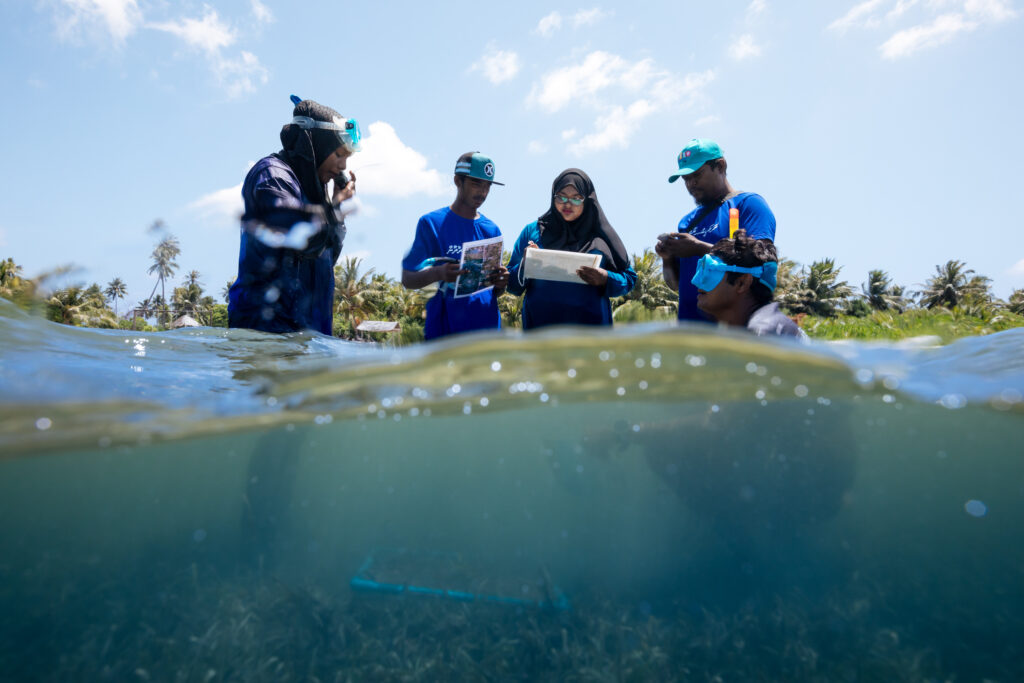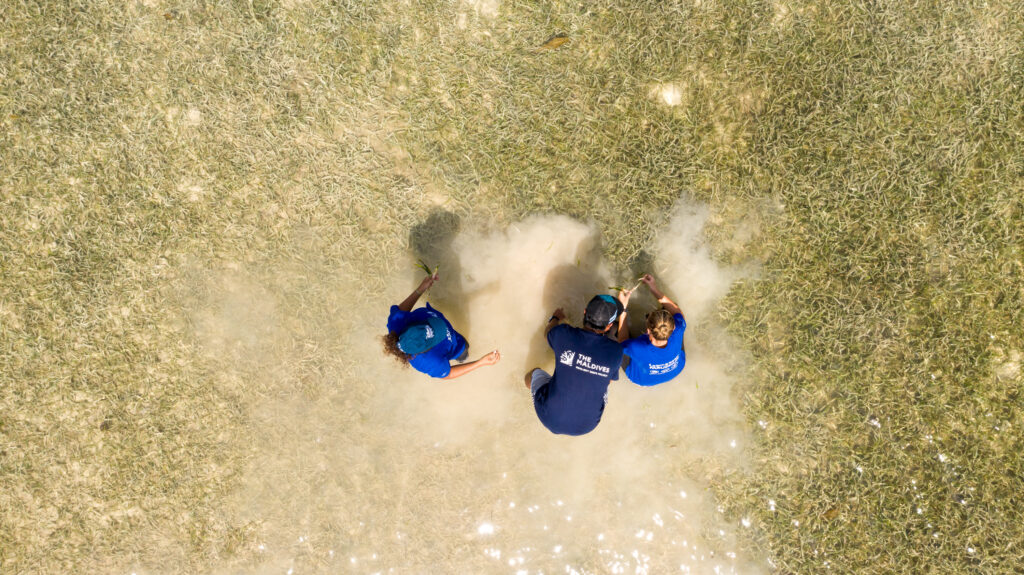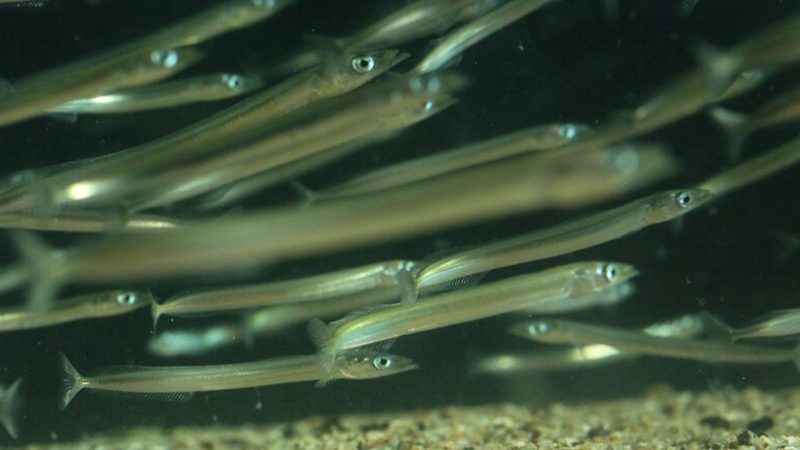I remember my first experience of seagrass very well. I was living on a reclaimed island called Hulhumale’ at the time, a five-minute boat ride from the capital city of Male’. The island had been built to make space for an increasing population at the city centre, but in the process, it destroyed the once thriving reef that it was built on top of. I knew I had a very slim chance of seeing healthy corals. Still, I wanted to venture underwater to get up close with its inhabitants, to disappear into their world.
I surveyed the shoreline. I could just about make out dark patches in the sea on the northern side of the island. I struggled over broken rocks and discarded construction material and finally plunged myself waist deep into the water. With plans already underway to reclaim the island further, this swim was my only chance to witness what lay beneath the waves at this particular spot.
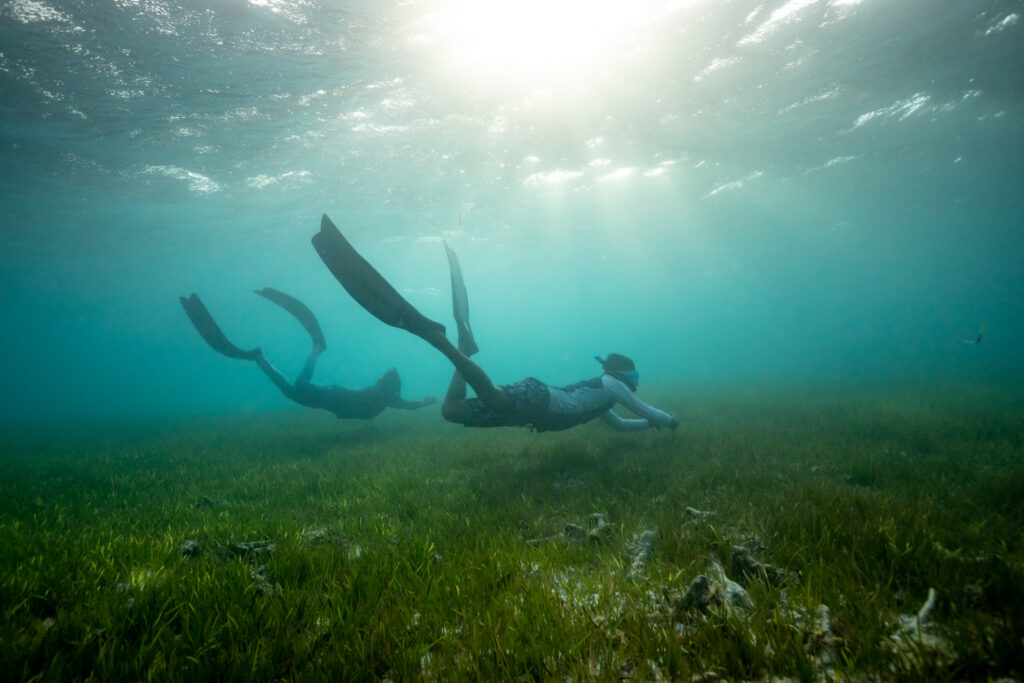
I started to swim. Having seen stingrays swimming in the silty lagoon from the shore, I was a little apprehensive – growing up we were told that the ocean was a dangerous place. After a few minutes I reached the dark patches I had spotted earlier. As I drew closer, I started to make out what was in front of me. It was a densely vegetated underwater meadow, a forest of long green grasses swaying back and forth in the water, dancing amongst the rays of sunlight. I was mesmerised.
I started visiting this patch more often and with each visit came a new surprise. Pairs of ribbon eels swam freely in the water flaunting their bright blues and yellows. Schools of bumphead parrotfish cruised by without taking any notice of me. Fevers of juvenile stingrays lazed on the sandy patches in the afternoon sun. Yellow coral gobies checked me out from behind branches of staghorn corals. Patches of very healthy rose-like corals glinted in the sunlight and small fish that I had never seen before on coral reefs were spotted sheltering amongst the seagrasses.
I felt like I had stumbled upon a well-kept secret. At that time, in the Maldives, seagrasses were considered ugly and both Maldivian people and tourism businesses actively destroyed them. Some resorts would cover seagrasses with tarp to suffocate them while others would remove them laboriously by hand or with tools. This didn’t sit well with me. I couldn’t understand how anyone could think these beautiful places merited being destroyed. Surely seagrasses served a purpose?
I discovered that seagrasses are flowering plants that adapted to survive underwater 100 million years ago. Just like plants on land, seagrasses photosynthesise and release oxygen as a by- product. Smithsonian Institute estimates that just a hectare of seagrass can produce 100,000 litres of oxygen a day.
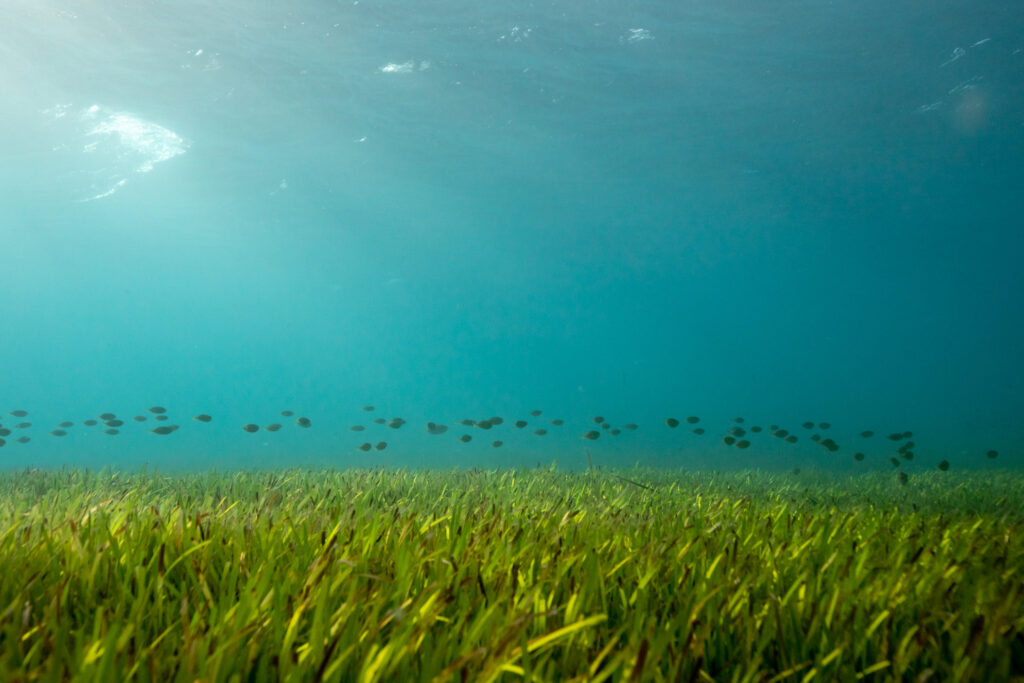
Seagrasses are found on all continents, except Antarctica. To date, more than 70 species of seagrasses have been recorded. Soberingly, a study by the University of California found that almost 15% of these are now considered threatened due to habitat loss and degradation, driven by rapid development and pollution. Seagrasses are thought to be one of the most rapidly declining ecosystems in the world. It is estimated that 29% of global seagrass has been lost and if trends continue, another 20-30% could be lost in the next 100 years.
In the Maldives, seagrasses are found in shallow lagoon areas between the low-tide mark of the island and the coral reef which protects the island. They are not found uniformly across the country, but it is not understood why this is. Maldivians often confuse seagrasses with seaweed. Seaweeds are a type of algae that do not have flowers
or veins and are not specialised to absorb nutrients like seagrasses. In recent years, seagrass areas are believed to have expanded in the Maldives. Scientists put this down to high nutrient input from sewerage outfalls and restricted water flow due to coastal modification projects. Like any other land plant, they grow stronger and faster when nutrients are present, providing an essential function in cleaning up the water column.
Seagrasses can also help protect coral reefs and humans from disease. In Indonesia, a study led by Cornell University (US) found that reefs bordered by seagrass meadows had 50% less bacterial pathogens capable of causing disease in humans and marine organisms.
Seagrasses are home to a huge numbers of marine species that depend on them for food and shelter. A study by the National Centre For Sustainable Coastal Management in India discovered that a single hectare of seagrass can house as many as 100,000 fish.
Critically endangered green and hawksbill turtles feed on seagrasses. Green turtles can eat up to two kilograms of seagrass a day and they tend to return to the same areas to feed…
To read the full article, The importance of ocean meadows, in Issue 14 of Oceanographic Magazine, you can purchase the magazine from their website shop or digitally via Issuu.
